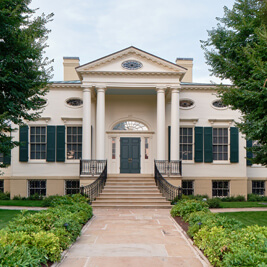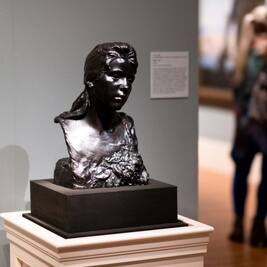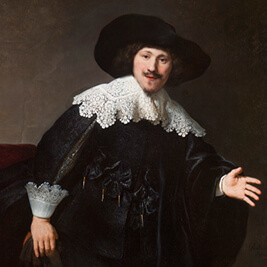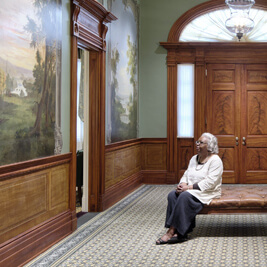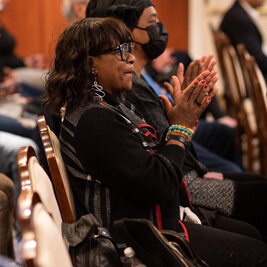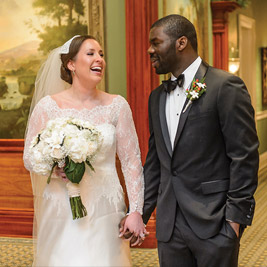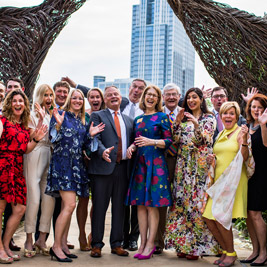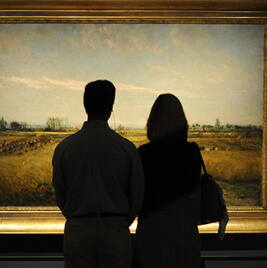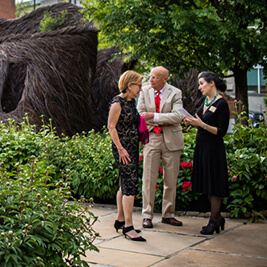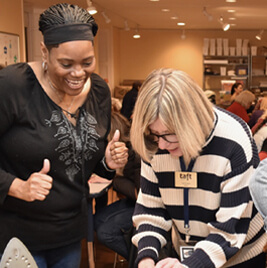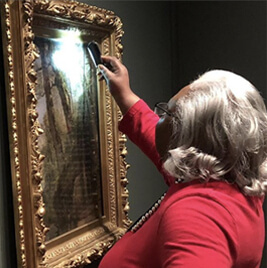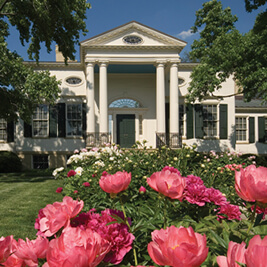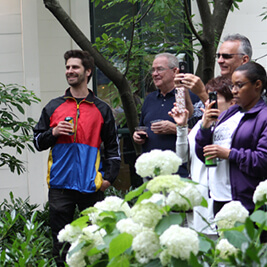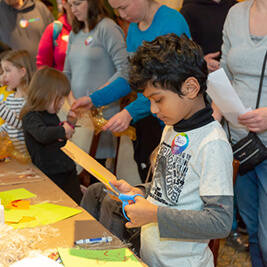- Do + See
- Dine + Host
- Give + Join
- Educate + Learn
"Excitement of the Quest"—A Neoclassical Vision
How the Taft’s Architecture and Furniture Embraces Greek and Roman Ideals
by Ann Glasscock, Assistant Curator
Did you know that 2020 marks the bicentennial of the Taft Museum of Art's historic house? Two hundred years ago the oldest part of the museum’s footprint began to take shape. Around 1820, a simple four-sided home was built for Martin Baum (1765–1831) and his wife, Ann Sommerville Wallace Baum (1782–1864), forming the core of what would become one of Cincinnati’s most historic buildings. With that, it seems only fitting that we explore the predominant style of the early 1800s: Neoclassicism—an artistic approach that embraced the ideas of ancient Greece and Rome. Classical ornament and a preference for order and symmetry were hallmarks of this new style, elements that are reflected in the Taft’s architecture and its American furniture.
But what sparked this interest in antiquity? In a way, it started with the Scottish architects Robert and James Adam. Intrigued by archaeological excavations, they traveled to Italy in the 1750s and ’60s to study classical ruins. What the Adam brothers saw inspired their designs, and in 1773 they published the first installment of The Works in Architecture by Robert and James Adam, a highly influential book that helped open the door for the Neoclassical style. English furnituremakers such as George Hepplewhite and Thomas Sheraton also adopted the ideas set forth by the Adam brothers, which American craftsmen eagerly studied. Around the same time, the founders of the United States had been examining ancient Greek and Roman political philosophies to better define the government. It became clear that Neoclassicism, which contributed to the Federal style in the United States, best expressed the ideals of the new country, both politically and visually.
Federal-era andirons and fenders can be found throughout the museum. The latter protected both the floor and passers-by from embers or sparks from the fire. The fender from the dining room (fig. 2) features a decorative linear design known as Greek key, in keeping with the Neoclassical style of course. Siple also purchased this early 19th century fireplace mantel, one of twelve salvaged from homes throughout the Midwest and the East Coast. This one came from a home in Minerva, Kentucky, and much like the museum’s portico, it too is supported by plain columns and is decorated with ornament resembling the facade’s elliptical windows. The Tafts’ dining room further embraces Neoclassicism in its remarkable plasterwork ceiling (fig. 3). In 1910, Charles and Anna hired the architectural firm of Elzner & Anderson to enlarge the dining room. To the ceiling, they added an impressive oval plasterwork medallion in the Adam style. An original Adam ceiling from the English mansion Croome Court demonstrates Elzner & Anderson’s research into period designs (fig. 4).
For the museum, Siple also purchased nearly all the American furniture on display from an auction in New York. The works in this sale belonged to the late Louis Guerineau Myers, a well-known collector and connoisseur of early American furniture and decorative arts. Metropolitan Museum of Art curator R. T. H. Halsey wrote of Myers: “He was a real collector who experienced the excitement of the quest, the joy of possession, and the delight of the companionship of every piece of his collection." Siple had found the perfect sale, and he is to thank for the exceptional Federal furniture now in the museum’s collection.
One of Siple’s purchases included a rare card table almost certainly made in the workshop of the renowned furniture maker Duncan Phyfe, called by a contemporary patron the “United States rage” (fig. 5). The table’s visually striking base suggests the form of crossed lyres, a musical instrument popular among ancient cultures. They frame a turned finial surmounted by a delicately carved pineapple. In the early 1800s, pineapples—then an incredibly expensive fruit—served as a symbol of the owner’s wealth and hospitality. Below, each gracefully curved leg terminates in a brass-capped foot modeled in the form of a paw with clearly delineated fur and claws. Early 19th century designers borrowed the paw foot from ancient forms like this bronze tripod stand from Greece (fig. 6).
Zoomorphic characteristics also appear on other pieces of furniture in the museum’s collection, such as Michael Allison’s elegant sofa that is supported on four realistically modeled and finely carved lion’s-paw feet (fig. 7). On the front two feet, four horizontal feathers—possibly those of an eagle, thus symbolizing the new nation’s independence—sweep back from the edge of each foot. Characterized by rich materials and classical ornament imbued with a strong sculptural quality, Allison’s sofa embraces the latest fashions of the Federal era. Allison, Phyfe, and other furnituremakers had successfully created works that embodied the spirit of the new nation.
